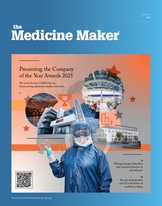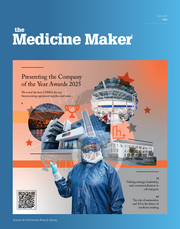What Patients Want
Most pharma companies want to become more patient focused. But how? You could start by simply listening more carefully.
Are the pharmaceutical industry's clinical development programs more patient-centered than they used to be? Well, there is certainly a lot more talk about ‘patient-centric’ clinical trials. But if I were to pick up a protocol from today and compare it with a similar trial 10 years ago, I doubt I would notice a significant change in design or concept.
Do we think more about the patient than we used to? Yes... And yet, in over 20 years in the industry, I have seen countless missed opportunities to involve patients. For years, I worked on studies and programs that relied on patient involvement, and I saw first-hand the same problems again and again. Recruitment would fall behind, trials went over-budget, and patients had recurring complaints. Many of these issues stemmed from the original trial protocol; I wanted to find out where we were going wrong and how we could do better. The most obvious place to start was to talk with the patients. Surprisingly, this is still a novel concept.
When Nike launches a new tennis shoe, they don’t just push the shoe out into the world and hope for the best. They do extensive customer research involving focus groups, testing and surveys. Do we do that for clinical trials? No. We launch trials and hope for success. I could sense a gap in the market for a company specializing in clinical trial patient ‘market research.’
I was right. Our services have been in great demand right from the beginning. In a nutshell, we gather insights from patients. We use a variety of exploratory, qualitative approaches; for example, patient-advisory boards and focus groups. and we design and implement quantitative research via surveys. All patients are different, so by taking a large – and preferably diverse – group, we can validate findings from our qualitative research.
‘Mock study visits’ – where a doctor sees a patient at the proposed trial center for a simulated (and observed) appointment – are also popular. Many of our clients have been shocked and surprised by what they are hearing. For example, after a recent simulation, it became clear that patients were confused about how to take the drug. By re-training staff at the site, updating packaging information, and adding more patient education, we helped the company avoid potentially serious medication errors on the trial.
Planned endpoints and patient-reported outcomes can also be informed by improved dialogue with patients. You can only include indications on the label that you have assessed in a trial; it’s imperative to get these right the first time. For example, determining quality of life assessments for a disease with multiple symptoms isn’t always as obvious as it seems. When trying to determine which symptoms are most bothersome for the patient, their insights may surprise you.
Research with previous clinical trial participants is also very insightful. Based on our work, we have found that the relationship between the patient and staff at the site is critical for the patient’s overall experience. When sponsors are selecting a site, patient population, adhering to good clinical practices, relevant equipment and experience are all important, but many companies don’t always consider who will be interacting with the patients – and how. Customer service is not irrelevant in clinical trials. When you ask a patient, “how was your clinical trial experience,” often they will first describe how they were treated and how flexible appointment times were. One patient described going into the same center every Friday for a year, speaking with the same receptionist – but without the slightest sign of recognition.
Every company I speak to wants to increase patient engagement. They know it’s the right thing to do, and that it will be good for business in the long term. In many cases, the ‘what’ and ‘why’ are clear enough – the ‘how’ is the problem. My answer is simple: do something.
As an industry, our culture has always been provider or payer centered. We need a massive cultural shift; we need to put patient–centered outcomes at the heart of the business model. The most progressive companies have already started on this journey by deploying systematic frameworks and dedicated teams to oversee implementation. But you don’t have to change the whole company overnight; just try a few ideas. Keep exposure and budgets low, and see what works. Introduce measurable, achievable outputs; for example, simply speaking to patients before a clinical trial or conducting a survey. Once you start communicating with patients, you will learn what they are thinking and feeling – and that could well lead to faster, more effective, and less costly trials.
Abbe Steel is Founder and CEO of HealthiVibe, a company that enables patients to contribute to clinical trial design. Previously she was the Vice President of Patient & Physician Services at UBC-Express Scripts, worked at Sanofi on global marketing programs, and was Senior Director, Patient Programs at PAREXEL. When Abbe isn’t busy tweeting (@AbbeSteel) about patient centricity, you can usually find her walking a funny-looking black dog named Harper.



















